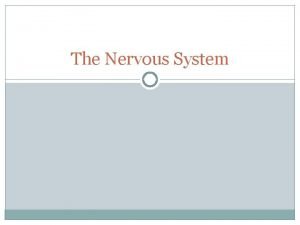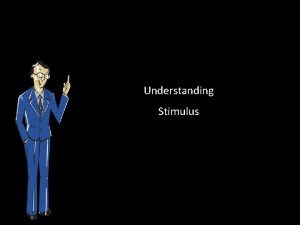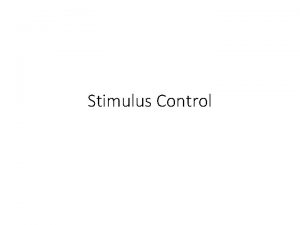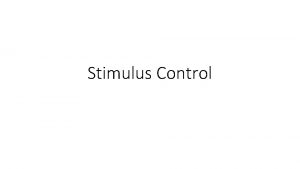The Nervous System A stimulus stimuli if theres








- Slides: 8

The Nervous System

�A stimulus (stimuli if there’s more than one stimulus) is something that the nervous system responds to. �For example, if I am listening to music and drinking a pop, I am hearing music and tasting the pop. These stimuli cause information to be sent to my brain.

Central nervous system: Brain and spinal cord Autonomic nervous system: Things you can’t control (heartbeat, breathing, reflexes) The Brain Organization of the Spinal cord Nervous System Sensory nerve (goes to brain) Motor nerve (brain to muscle) Somatic nervous system: Things you can control (muscles, jumping, throwing, etc. ) Peripheral nervous system: All other nerves

�Sensory nerves take in information about the world and relay it to the brain. �Motor nerves send information from the brain to muscles. �Playing the piano: I would be using motor nerves to move my hands, and sensory nerves to listen to the music.

Neuron Dendrites Nucleus Axon Synapse

�All tissue in the nervous system is made of special cells called neurons. �Neurons have long tails called axons. These help to transmit signals. �Neurons end in synapses, or can be connected to muscles. Synapses are gaps between neurons, but signals “jump” the gap using chemicals called neurotransmitters. �Dendrites pick up signals from receptors, or from other neurons. Signals move from dendrites, down to axons, and to the synapse.

Sensory nerve Reflex Arc Interneuron (located in spinal cord) Motor nerve

�Reflex arcs are involuntary (you can’t control them) and these signals never reach the brain. �For example, if I touch something very, very hot, I don’t have to think about whether or not I have to pull my hand away. It happens automatically. �Reflex signals pass through the spinal cord and connect sensory nerves to motor nerves. Interneurons bridge the two types of nerves. �Reflexes help to protect us before too much damage happens to our bodies.















